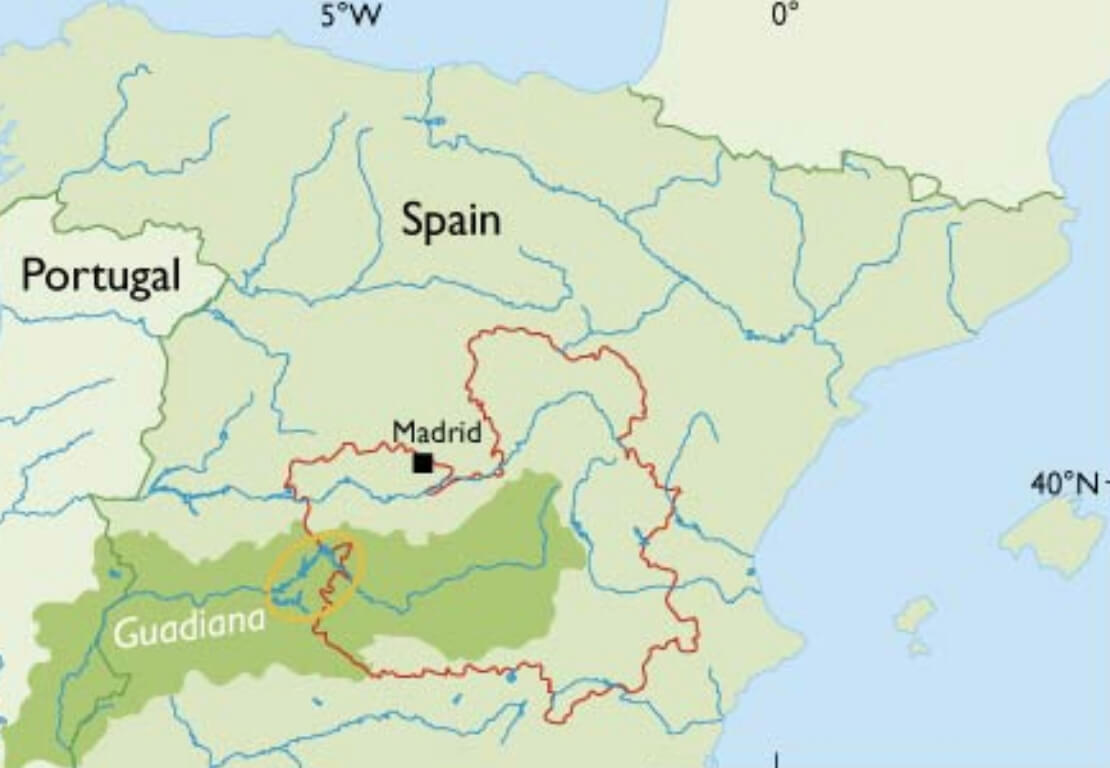
How to Cite
Share
Abstract
Las Tablas de Daimiel, together with other wetlands in La Mancha, Spain, situated in the Upper Guadiana Basin (Fig. 1), has been catalogued as a Biosphere Reserve Area since 1981 as part of the UNESCO Man and the Biosphere programme. Between the mid-1970s and late 1980s, over 150 000 hectares of new irrigation areas were established, mainly as a result of private initiative. The average recharge rate of groundwater in the western La Mancha aquifer in the Upper Guadiana Basin is estimated to be between 200 and 500 million m3 per year, in dry and wet years respectively. Recharge also depends on the depth of the water table (Martínez-Cortina & Cruces 2003). Abstraction reached 600 million m3 per year by the end of the 1980s. Up to this time a total of 3000–5000 million m3 of the Upper Guadiana Basin aquifer’s water reserves was withdrawn (Bromley et al. 2000; Lopéz-Geta et al. 2006). The intensive use of groundwater has been a main factor for the improvement of the social and economic situation in this region, with a population of about half a million people, and where the agricultural sector is very important (Llamas et al. 2006). Water-table drawdown due to the intensive abstraction of groundwater for irrigation has caused severe negative impacts on wetlands, streams and rivers, and has resulted in a lowering of groundwater levels by up to 50 m. The main conflicts in the area are between farmers and conservationists, between central, regional and local government water agencies, and between small farmers and big farmers. The conflicts began about three decades ago (Llamas 1988) and have not yet been settled. In 2001 the Spanish Parliament asked the Government to present a hydrological plan for the Upper Guadiana Basin within one year. More than 20 draft proposals have been presented, the last one in 2006 with a budget of almost four billion Euros. This proposal has been met with strong opposition from most farmer lobbies. The Guadiana Basin is one of seven trans-boundary case studies of the EU NeWater research project (New Approaches for Adaptive Water Management under Uncertainty). The principal water-management issues in the project are addressed by adaptive and integrated water-resource manage ment. This includes uncertainty and risk mitigation, governance, crosssectoral integration, scale analysis, information management, stakeholder participation, financial aspects, system resilience and vulnerability. One work block in the NeWater project has the task of translating research outputs into tools for practitioners and end-users. As part of this effort, Bayesian belief networks (Bns) were selected as one possible tool to be developed as an aid to stakeholder participation in integrated assessment of gaps, being a suitable tool for dialogue in order to identify gaps in water-resource management functions, gaps to meet the goals of the EU Water Framework Directive and to analyse management potentials and constraints. The purpose of this paper is to describe the testing of Bns as a tool for participatory integrated assessment and adaptive and integrated water-resource management in the Upper Guadiana Basin.
How to Cite
Share
Copyright (c) 2007 Hans Jørgen Henriksen, Per Rasmussen, John Bromley, Africa de la Hera Portillo, M Ramón Llamas

This work is licensed under a Creative Commons Attribution 4.0 International License.
Downloads
Edited by Martin Sønderholm and A.K. Higgins
The Review of Survey activities presents a selection of 17 papers reflecting the wide spectrum of activities of the Geological Survey of Denmark and Greenland, from the microscopic to the plate-tectonic level.
Activities in Denmark: The Survey's field of activities in Denmark is illustrated by three papers on [...]









